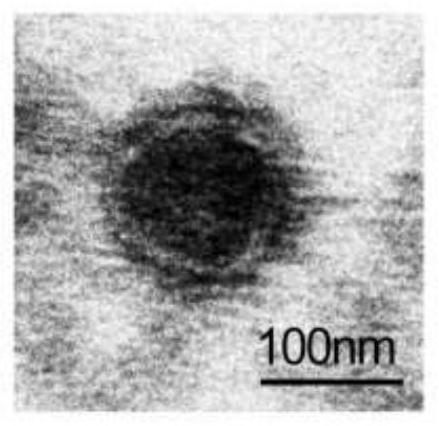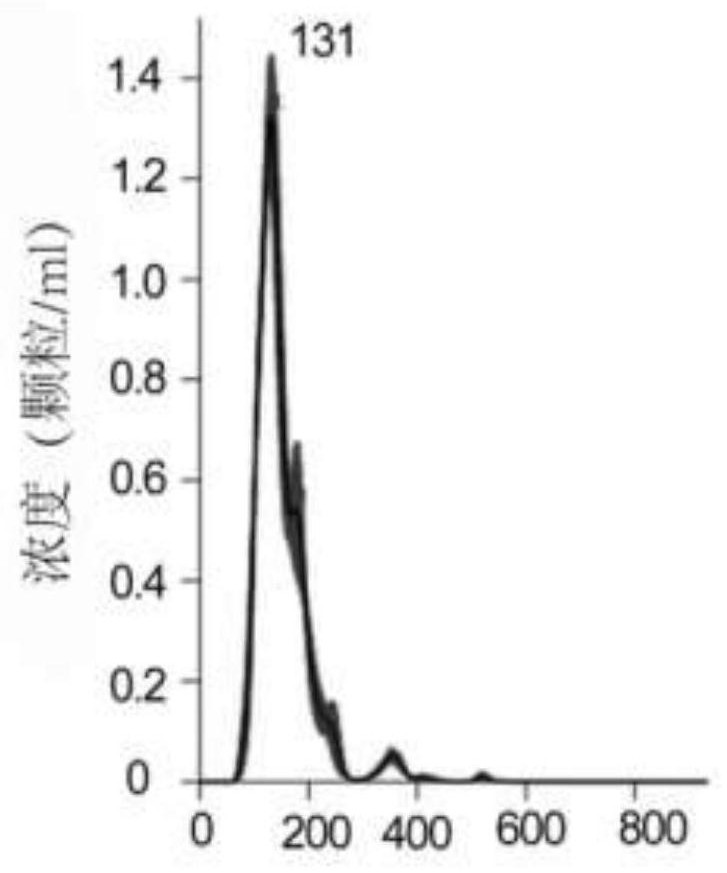Application of brown adipocyte-derived exosome
A brown fat and exosome technology, applied in the application field of brown fat cell-derived exosomes, can solve the problems of limited energy consumption, low adipose tissue survival rate, technical difficulty, etc.
- Summary
- Abstract
- Description
- Claims
- Application Information
AI Technical Summary
Problems solved by technology
Method used
Image
Examples
Embodiment 1
[0025] Example 1 Isolation and culture of exosomes secreted by brown adipocytes.
[0026] (1) Extraction of exosomes from brown adipocytes
[0027] After the mice were killed by neck dislocation, the brown fat cells were removed from the mouse scapula, and a small amount of white fat above the brown fat was removed. Mince the brown adipocytes with scissors. After shredding, place them in DMEM containing 10% mv free FBS (both purchased from Gibco Company) culture medium, and then place them in a carbon dioxide incubator for cultivation. After culturing for 24 hours, the culture medium was collected for exosome extraction.
[0028] (2) Extraction of exosomes
[0029] First, pretreat the culture medium. The pretreatment method is 300xg, centrifuge for 10 minutes, remove the precipitate, 3000xg, centrifuge for 30 minutes, then remove the bottom, and finally 10000xg, centrifuge for 60 minutes, and then remove the precipitate. Pretreatment is to remove cell debris or some larger...
Embodiment 2
[0030] Example 2 Identification of brown adipocyte-derived exosomes
[0031] (1) Western-blot identification of exosome marker proteins CD63, CD9 and TSG101
[0032] Add appropriate amount of cell lysate. The cell lysate (purchased from Biyuntian) was lysed on ice for 30 minutes to allow the cell lysate to fully function. The cells in the cell lysate are ultrasonically disrupted to release the protein in the cells more completely. Centrifuge at 12000xg for 5 minutes at 4°C. Aspirate the supernatant and test the protein concentration. The protein concentration test method is the BCA method (purchased from Thermo Fisher), and the protein is diluted 10 times for measurement, that is, 1 μl of protein solution is added to 9 μl of ddH2O (see the relevant instructions for detailed steps). Adjust the egg whites to the same concentration, add 5x loading buffer (purchased from Beyond), and cook in a metal bath at 100°C for 5 minutes, then store the boiled egg whites at -20°C. Confi...
PUM
 Login to View More
Login to View More Abstract
Description
Claims
Application Information
 Login to View More
Login to View More - R&D
- Intellectual Property
- Life Sciences
- Materials
- Tech Scout
- Unparalleled Data Quality
- Higher Quality Content
- 60% Fewer Hallucinations
Browse by: Latest US Patents, China's latest patents, Technical Efficacy Thesaurus, Application Domain, Technology Topic, Popular Technical Reports.
© 2025 PatSnap. All rights reserved.Legal|Privacy policy|Modern Slavery Act Transparency Statement|Sitemap|About US| Contact US: help@patsnap.com



